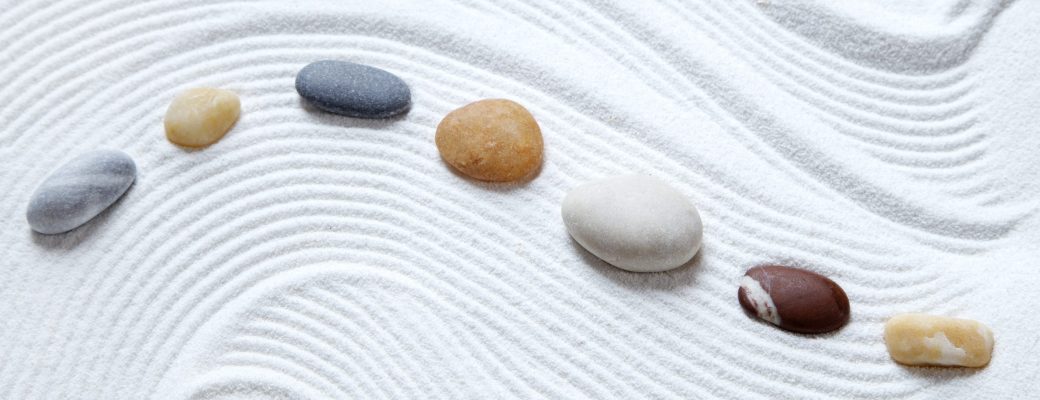Driven by a facilitated digitization of the world around us, the spa industry is currently evolving with advanced technologies in…
The feng shui of spa tranquility
Leveraging aspects of the ancient practice to elevate your business
By Sean Tarry
When it comes to helping guests escape from the stresses and frustrations of their day-to-day lives and providing them with experiences of tranquility, peace, and relaxation, ensuring the right surrounding and environment is critical. And, although there are a number of different ways to go about developing and constructing the décor and layout of a spa, depending, of course, on the desired aesthetic and vision of the establishment, an ancient practice—one that dates back thousands of years—could hold the key to unlocking the potential of today’s spas. In fact, according to Mark Ainley, Contemporary Feng Shui Consultant with Sense of Space and an expert on space and flow, it’s a practice that aligns extremely well with the objectives of any spa location.
“The basis of feng shui is to balance built environments with key elements and principles found in the natural world,” he explains. “Spending time in a space that has incorporated these natural design principles can support individuals in taking steps toward improving their mental, physical, and spiritual well-being. And, considering the atmosphere that spa owners are attempting to create for their guests, the principles of Feng Shui can serve as a fantastic guide for what they aim to accomplish.”
Environment of escape
Feng shui is a system that dates back thousands of years and is practised today all over the world, increasingly leveraged by many professionals within architecture, interior design, and landscaping, among a number of other disciplines. And, although it’s considered by many to be a pseudoscience, falling short of receiving actual scientific accreditation to back its claims, Ainley highlights that key feng shui applications and teachings are aligned with the science-backed design practice of biophilia, which consists of 14 design principles observed in nature that support human well-being, as well as with the relatively new scientific field of neuroaesthetics which explores the positive benefits of observing beauty. Ainley suggests that spa establishments can take advantage of these principles to enhance the element of escape that they offer their guests.
“For those living in urban environments, everyday surroundings can be very imposing,” he says. “The architecture found in most North American cities is really large in scale and has been made using hard materials, which can give off an intimidating and oppressive atmosphere. The colours that are used in the construction of the buildings are usually very plain, too, resulting in a distinct lack of vibrancy that is found in the lush, nourishing environments of the natural world. Our cities tend to resemble deserts and inhospitable rocky terrains more so than lush landscapes and serene settings. And they tend to be built on linear grids using straight llines—forms that can bring about a speedier and thereby more aggressive quality, both to these spaces as well as the movement by people through them—which can foster impatience and frustration. Spas have the opportunity to offer an environment that contains beautiful colour, softer forms, and natural elements that appeal to each of the senses, arranged with a flow that encourages relaxation and peace—all of which can provide much-needed relief from the agitations of the outside world and a haven to rest and recover from them.”
Ainley goes on to explain that whether indoors or outdoors, the same principles of feng shui apply to the development of a space and arrangement of the pieces within it. And, allowing the universal elements of wood, fire, earth, metal, and water—which, when balanced, bring comfort, equilibrium, and enjoyment—to guide the creation of a space can result in dramatic effects and help create the perfect spa setting.
Spa owners can consider implementing the following techniques inside and outside in order to properly harness the innate energy of nature and provide the peaceful, relaxing experience that their guests are looking for.
Wood
Ensure the space is adorned with a variety of plants, flowers, and other forms of vegetation to stimulate a sense of natural growth and organic processes. Images of calm, lush landscapes, and vibrant flowers can be very effective in creating a nourishing backdrop and space for relaxation and reflection.
Fire
Firepits and fireplaces are a great way to connect guests with the warmth of fire, while candles, warm lighting, and fiery colours can create a warm and nurturing environment, soothing the senses and creating both stimulation and relaxation.
Earth
This is a critical element to iinclude, but not necessarily in the way one might imagine. It is not just soil in plants that consists of earth but also tile, brick, and square forms (like poufs and cushions). Low seating and tables, by virtue of being closer to the ground, also add the stable, grounding quality inherent in earth.
Metal
Most modern built environments have an overabundance of metal, both with the actual material and its symbolic white and pastel colouring. Bringing in rich warm golds while using whites and pastels for towels, sheets, and other soft materials can integrate this element in a more soothing way. Metal chimes, gongs, and bells are another calming means of bringing them into such a space.
Water
This might seem like a no-brainer element to include within a spa—and it is. However, spa establishments can be creative with their use of water, presenting it in pools, ponds, showers, tubs, waterfalls, streams, and more. Images of calm water scenes, when well placed, can also be effective, as is the sound of trickling water.
Finding a balance
There are countless considerations governed by feng shui that can help create a nourishing and relaxing environment. Ainley highlights that good design naturally incorporates these, and that skillfully applying these techniques gives any space an added natural sense of calm and peace. He adds that one of the biggest challenges in modern design is creating too much uniformity rather than harmoniously balancing contrasts.
“Things that are too same-same can initially seem calming, but they keep us yearning for actual balance and fullness,” he says. “Horizontal supports vertical. Dark balances light. If we stop seeing contrasts as opposites and rather consider them as complements, we can create spaces that are more dimensional and nourishing in experience.”
Given the increasing antagonism and polarization in the outer world, this concept could be a powerful way to create a truly calming space.
Another key that Ainley stresses for any business owner is ensuring that form and function co-exist. “True feng shui is always functional: décor and aesthetics are important, but these need to be fused with practicality,” he asserts.
Customers need to enjoy a seamlessness of experience that parallels how integrated things are in nature. The best way to do that, according to Ainley, is to “put yourself in the customers’ shoes by experiencing the space from their perspective—any ‘bumps’ in the user interface is something to revisit.”
Walking a customer’s journey step by step will support any spa owner in creating a setting and experience that are more balanced and enjoyable, reaching their fullest potential both in design and service.




